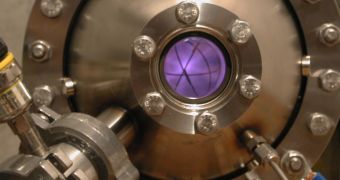In March 1989, cold fusion was brought into popular consciousness by the controversy surrounding the Fleischmann-Pons experiment, when "cold fusion" was hailed as a scientific breakthrough with the potential to solve the world's energy problems by providing a virtually unlimited energy source.
It was dismissed by some scientists as "bad" science due to alleged errors in calorimetric systems, or heat measurement, that could have misled the scientists into thinking that the excess heat produced was nuclear in origin, and a panel organized by the U.S. Department of Energy (DoE) concluded there was no convincing evidence that useful sources of energy would result from the phenomena attributed to cold fusion, but was sympathetic to careful funding of additional research to resolve the controversy. A second DOE panel, convened in 2004, reached similar conclusions to the prior panel.
Now, some researchers say they have new evidence that the phenomena - now called "low energy nuclear reactions" - has evolved and is supported by rigorous, repeatable experimental data, and a study by Fleischmann and colleague Melvin Miles offers new evidence of excess heat from cold fusion.
Using more precise calorimetric techniques, the new study reports evidence that the excess heat generated is nuclear and not the result of calorimetric errors. "Our work shows that cold fusion effects are real, but we cannot assess if this excess heat can become useful. Much more research work is needed to answer such questions," says co-author Miles, a chemist at the University of LaVerne in California.
Another scientist, chemist George Miley, is one of a handful of researchers who claims to have documented evidence of transmutations, or the production of new elements, resulting from low energy nuclear reactions (LENR). Transmutations are commonplace in high-energy physics and are considered clear evidence that some kind of nuclear event has occurred during the reaction.
But are the chemical environments of LENR experiments truly resulting in nuclear reactions?
Efforts are ongoing to verify these results, and that's exactly what a symposium on this topic, "New Energy Technology," has debated, at the 233rd national meeting of the American Chemical Society, but, whatever the results, cold fusion hyperdrive engines are still a long way to go.

 14 DAY TRIAL //
14 DAY TRIAL //